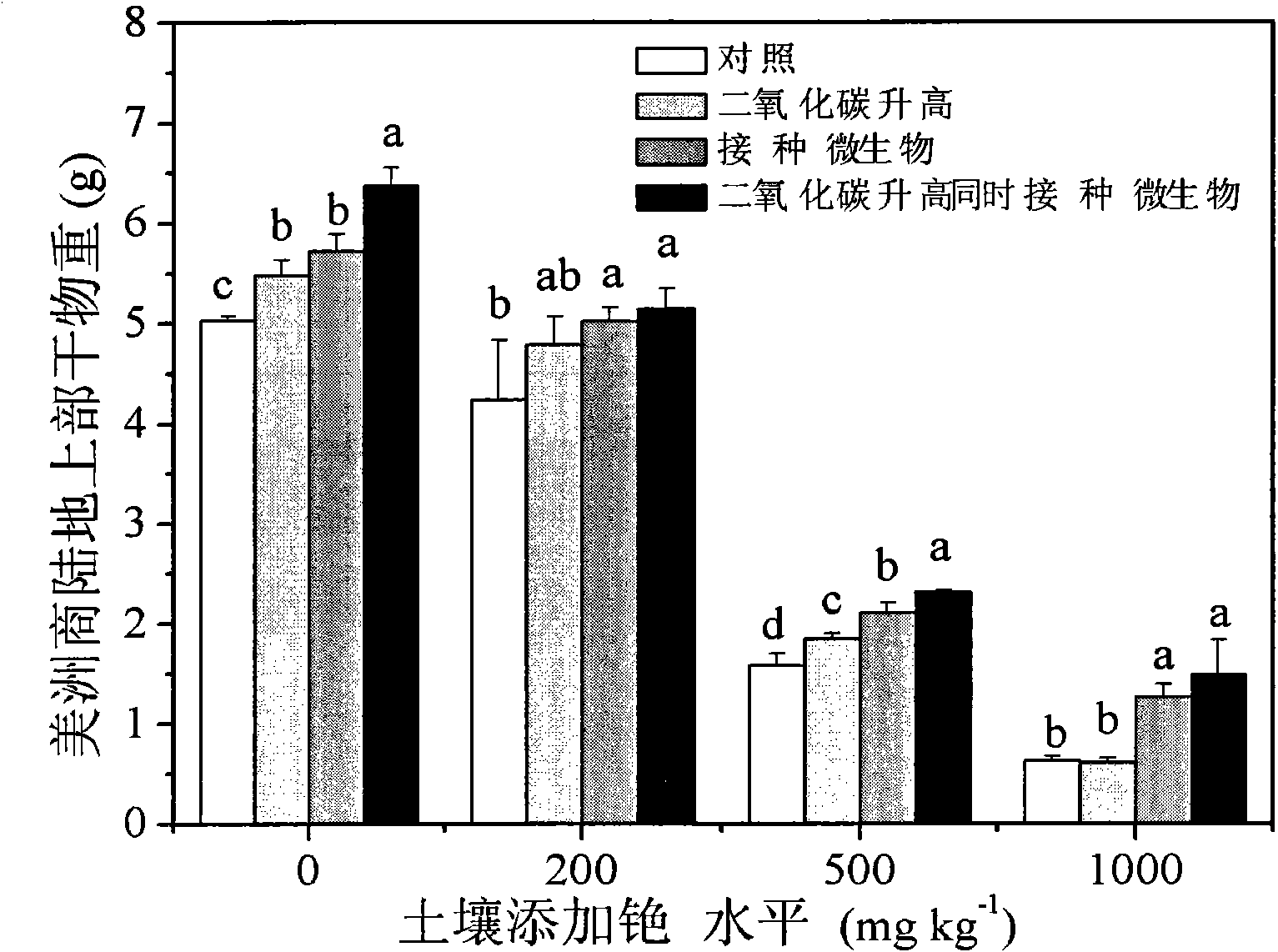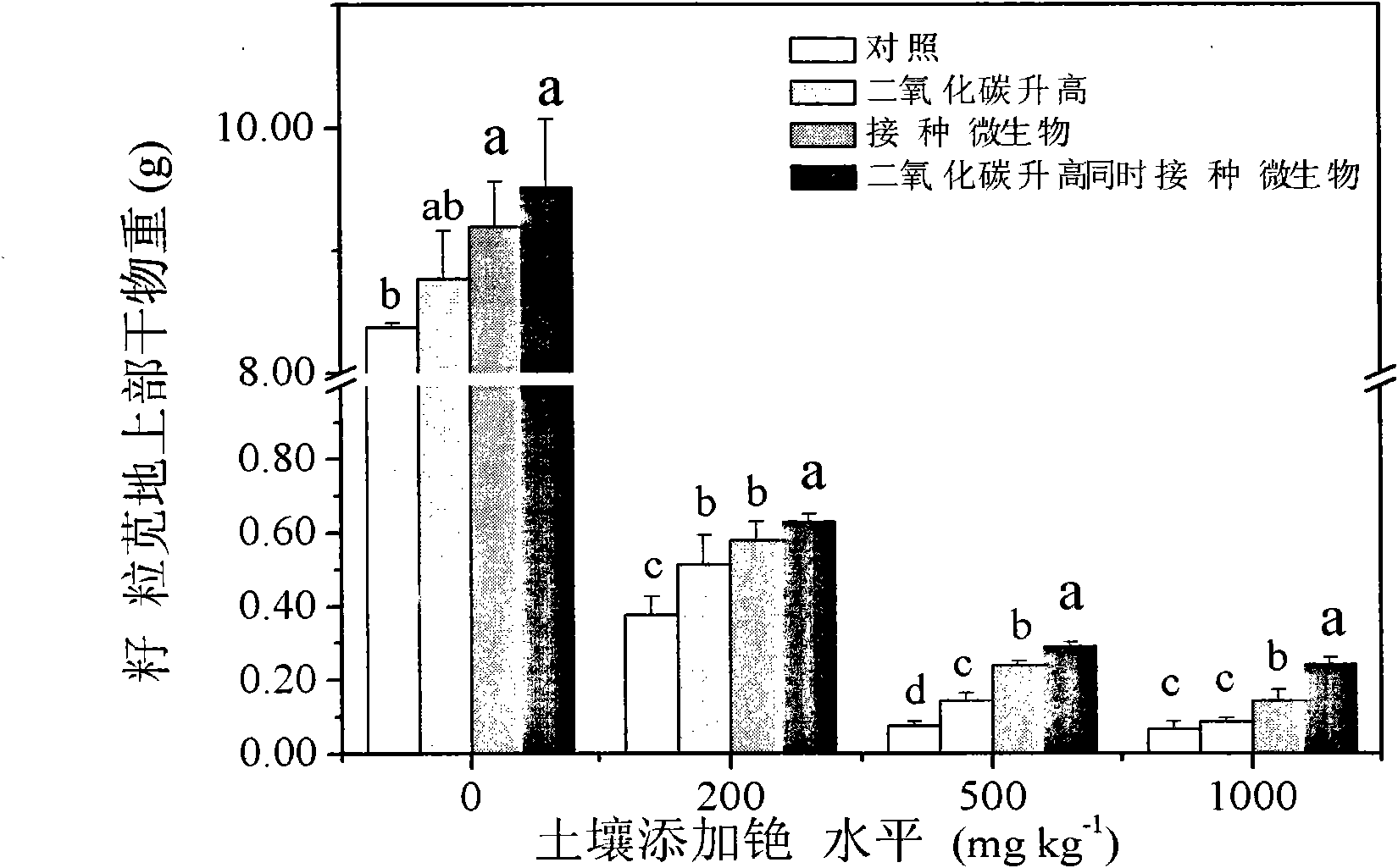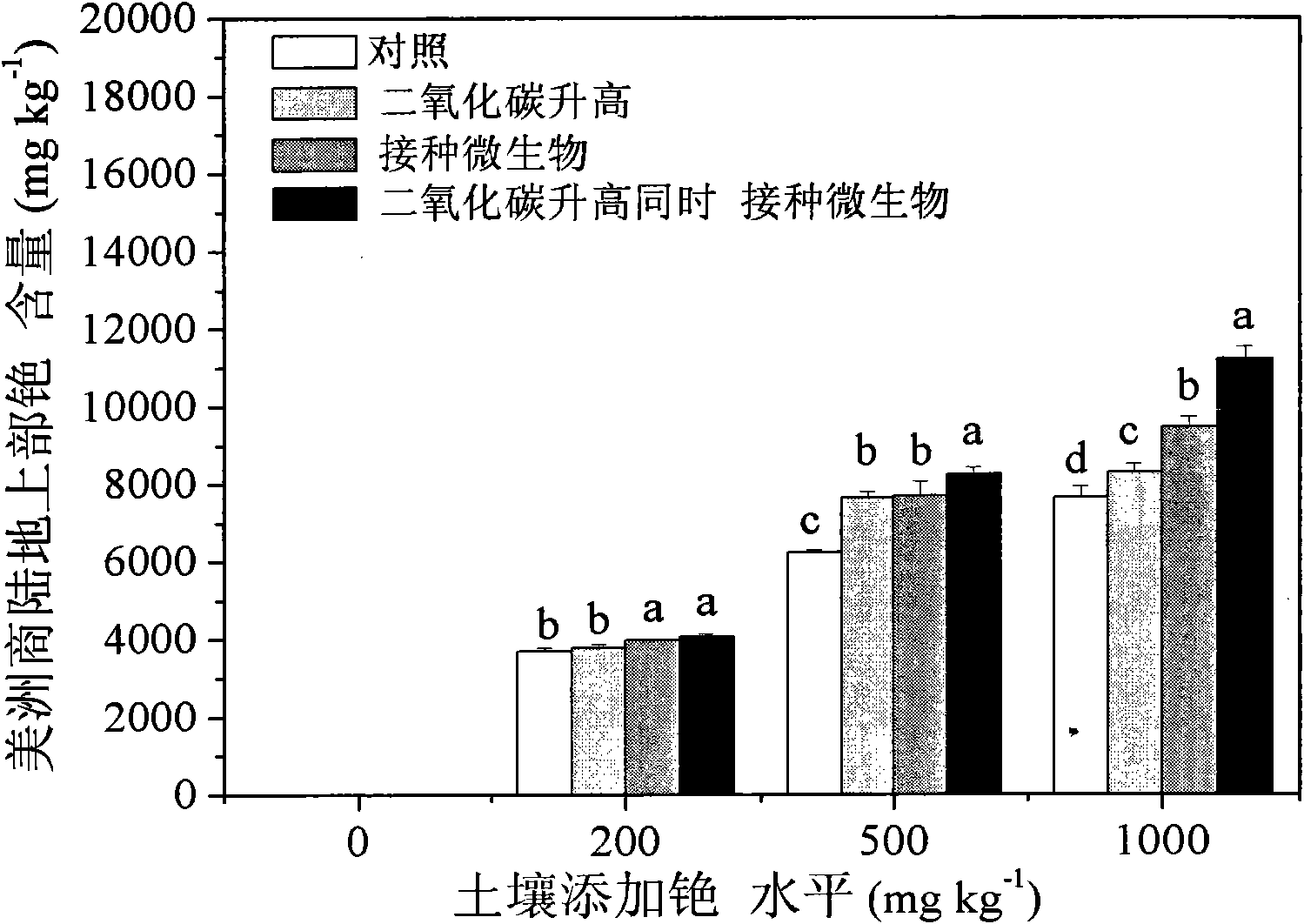Method for increasing photoremediation efficiency of plants by utilizing joint action of plant growth-promoting rhizobacteria and CO2
A plant growth-promoting bacteria and phytoremediation technology, applied in the field of phytoremediation efficiency, can solve problems such as difficult harvesting, plant poisoning, and seasonality, and achieve the effects of promoting landscape harmony, restoring land productivity, and improving restoration efficiency
- Summary
- Abstract
- Description
- Claims
- Application Information
AI Technical Summary
Problems solved by technology
Method used
Image
Examples
Embodiment 1
[0021] The experiment was carried out in 6 open-top artificial climate chambers (OTC) in the Ecotoxicology and Environmental Restoration Research Center (Tianjin) of the Environmental Protection Research and Monitoring Institute of the Ministry of Agriculture, of which 3 CO 2 The concentration is 360~380μL L -1 , with the external CO 2 The concentration remains the same; the other 3 are CO 2 Concentration controllable room, the test process controls the carbon dioxide concentration at 760±50μL L -1 , to maintain 24-hour ventilation. The operating parameters of the OTC during the test are shown in Table 1:
[0022] Table 1 OTC operating parameters of the test process
[0023]
[0024] The experiment was carried out in a potted manner, and the soil used was brown soil, which was collected from the long-term positioning test field of Shenyang Agricultural University in Liaoning Province. The basic physical and chemical properties of the soil are shown in Table 2. After th...
PUM
 Login to View More
Login to View More Abstract
Description
Claims
Application Information
 Login to View More
Login to View More - R&D
- Intellectual Property
- Life Sciences
- Materials
- Tech Scout
- Unparalleled Data Quality
- Higher Quality Content
- 60% Fewer Hallucinations
Browse by: Latest US Patents, China's latest patents, Technical Efficacy Thesaurus, Application Domain, Technology Topic, Popular Technical Reports.
© 2025 PatSnap. All rights reserved.Legal|Privacy policy|Modern Slavery Act Transparency Statement|Sitemap|About US| Contact US: help@patsnap.com



